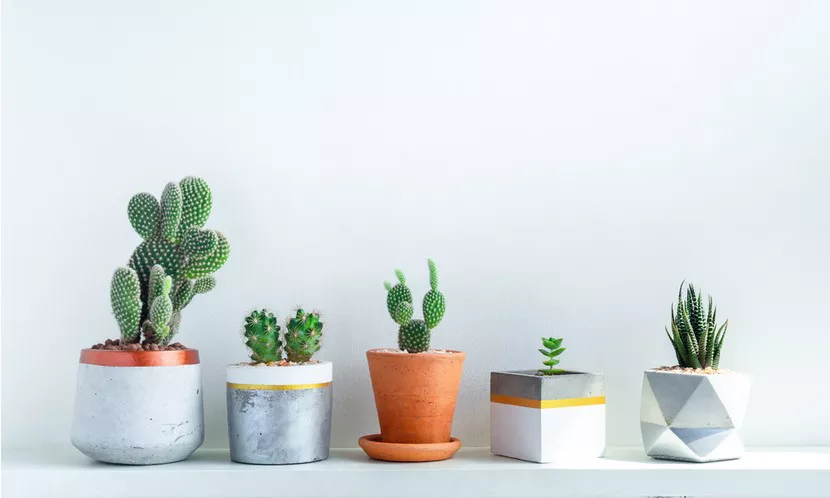Cultivating and caring for succulent cacti can be a rewarding and enjoyable experience for plant enthusiasts. However, ensuring the health and vitality of your succulent cactus requires a nuanced understanding of its unique watering needs.
Understanding the Unique Needs of Succulent Cacti
Succulent cacti, known for their ability to store water in their thick, fleshy stems and leaves, have evolved to thrive in arid environments. This adaptation allows them to withstand periods of drought, making them resilient plants. To effectively care for succulent cacti, it is crucial to recognize and cater to their unique water requirements.
The Role of Soil in Succulent Cactus Care
The type of soil used for succulent cacti plays a pivotal role in their overall well-being. Succulent cacti thrive in well-draining soil that prevents water from accumulating around their roots. A mix of cactus soil, perlite, and coarse sand provides the ideal balance, ensuring that water does not linger, reducing the risk of root rot—a common issue in overwatered succulent cacti.
The Frequency of Watering
One of the most critical aspects of succulent cactus care is mastering the art of watering frequency. Unlike traditional houseplants, succulent cacti do not require frequent watering. In fact, they prefer periods of dryness between watering sessions. Watering succulent cacti too frequently can lead to root rot and other moisture-related issues. A general rule of thumb is to water when the top inch of the soil feels dry.
Choosing the Right Watering Technique
When it comes to watering succulent cacti, the technique used is as important as the frequency. Succulent cacti are more susceptible to overwatering when subjected to a traditional watering can that saturates the soil. Instead, opt for a controlled watering method, such as bottom watering or using a narrow spout to deliver water directly to the base of the plant. This allows for targeted watering, minimizing the risk of excess moisture reaching the roots.
Signs of Overwatering and Underwatering
To fine-tune your succulent cactus care routine, it’s essential to be vigilant for signs of both overwatering and underwatering. Overwatering can manifest as yellowing or translucent leaves, mushy stems, and a foul smell from the soil. On the other hand, underwatering may cause shriveled or wrinkled leaves, a noticeable decline in overall plumpness, and dry soil. By paying close attention to these indicators, you can adjust your watering practices accordingly.
Seasonal Adjustments
Succulent cacti, like many plants, experience fluctuations in growth and dormancy based on seasonal changes. Understanding these natural cycles is crucial for adapting your watering routine. During the active growing season, typically spring and summer, succulent cacti may require more frequent watering. Conversely, in the dormant period—fall and winter—reduce watering to accommodate the plant’s slowed metabolic rate.
Choosing the Right Water Quality
The quality of water used for succulent cacti can impact their overall health. While succulent cacti are generally hardy and tolerant of various water sources, they do prefer water with minimal salts and chemicals. If using tap water, allow it to sit for 24 hours to let chlorine dissipate. Alternatively, rainwater or distilled water can be excellent choices, as they are free from minerals that may accumulate in the soil over time.
Container Considerations
The choice of containers for your succulent cacti can influence their water retention and drainage. Opt for containers with drainage holes to facilitate excess water runoff. Additionally, choosing pots made from porous materials, such as clay or terracotta, promotes better aeration and helps prevent waterlogged soil. Container size is also a factor; select a pot that allows for proper root development without excessive moisture retention.
Protecting Succulent Cacti from External Factors
Environmental factors, such as humidity levels and temperature, can impact the water requirements of succulent cacti. In high-humidity regions, cacti may need less frequent watering, while in arid climates, adjustments may be necessary to prevent dehydration. Similarly, temperature extremes, both hot and cold, can affect the rate of water absorption and evaporation, necessitating modifications to your watering routine.
Practical Tips for Watering Succulent Cacti
Consistent Schedule: Establishing a consistent watering schedule, aligned with the plant’s natural rhythms, can promote stability and help prevent overwatering.
Mulching: Applying a layer of mulch on the soil surface can aid in moisture retention and temperature regulation, reducing the frequency of watering.
Observation: Regularly inspect your succulent cacti for any signs of stress or changes in appearance. Adjust your watering routine based on these visual cues.
Avoiding Wet Foliage: Watering the foliage of succulent cacti, especially in direct sunlight, can lead to sunburn and damage. Aim to water the soil directly to prevent this issue.
Proper Drainage Maintenance: Ensure that drainage holes in the pots are clear and not blocked by debris, allowing water to escape freely during each watering session.
Conclusion
Mastering the art of watering succulent cacti is a fundamental aspect of successful plant care. By understanding the unique needs of these resilient plants and implementing thoughtful watering practices, you can create an environment where your succulent cacti thrive. From choosing the right soil mix to adjusting watering frequency based on seasonal changes, each aspect contributes to the overall well-being of your succulent cactus garden. With dedication and attention to detail, you can cultivate a vibrant and healthy succulent cactus collection that brings joy and beauty to your living space.


